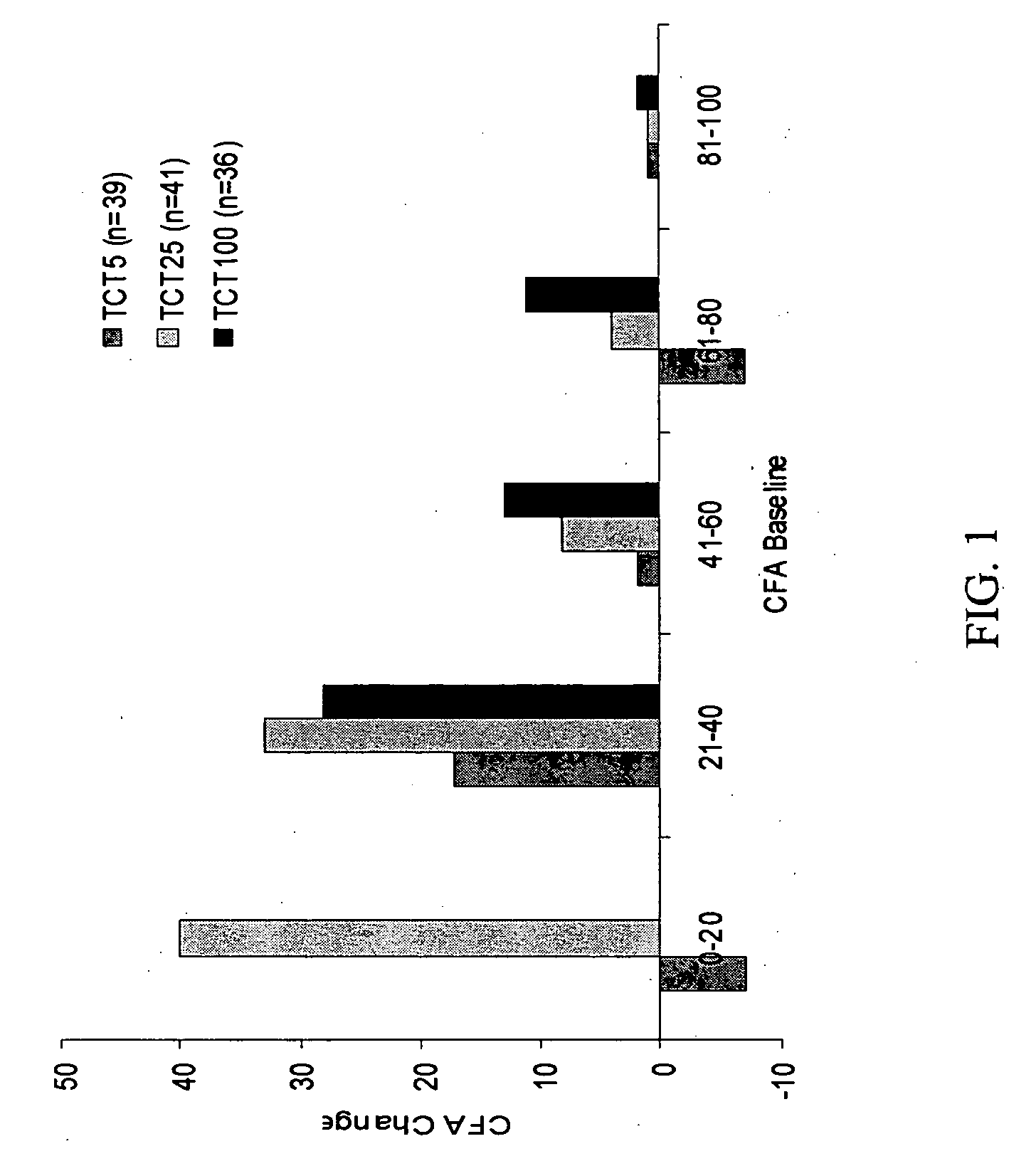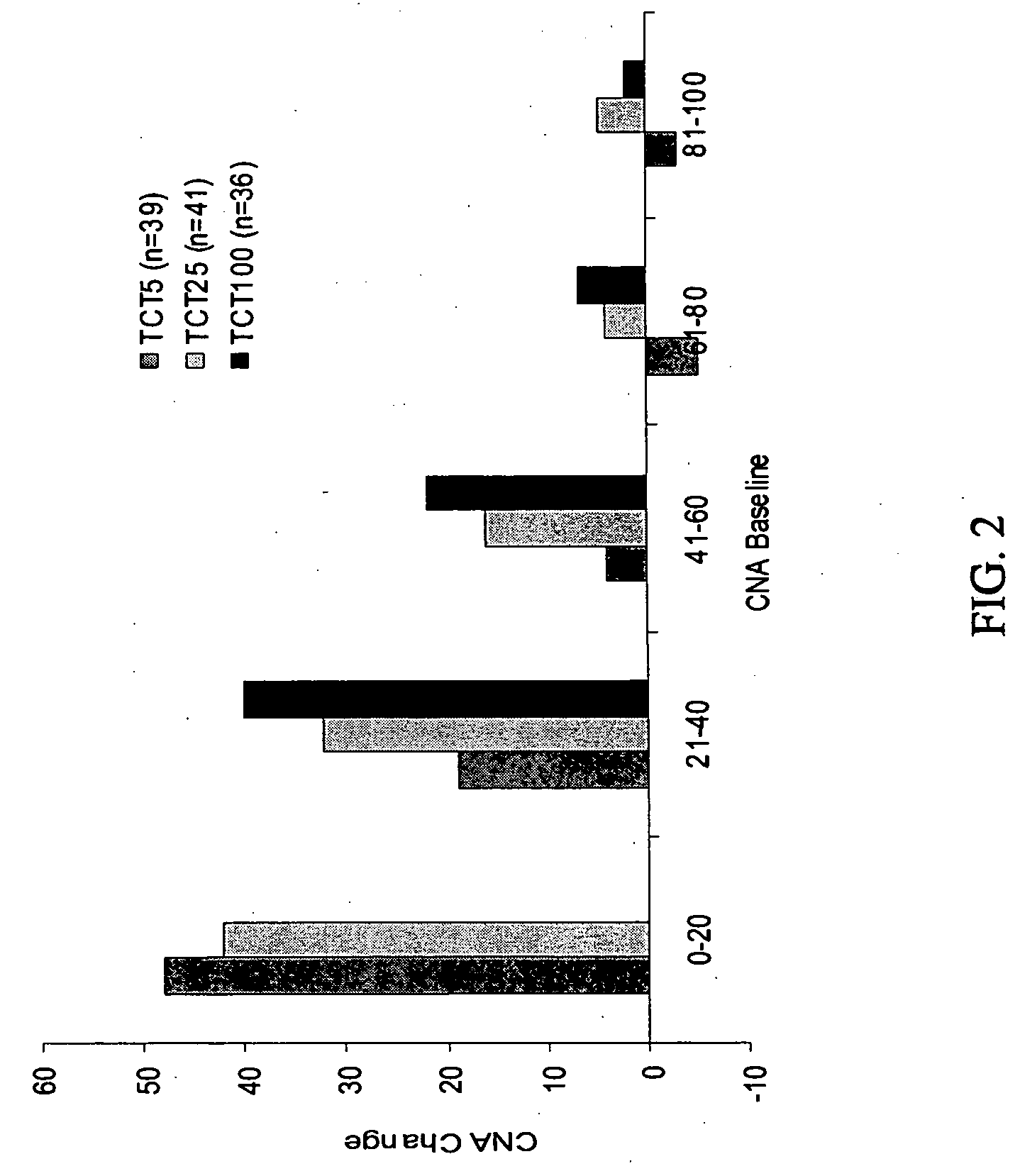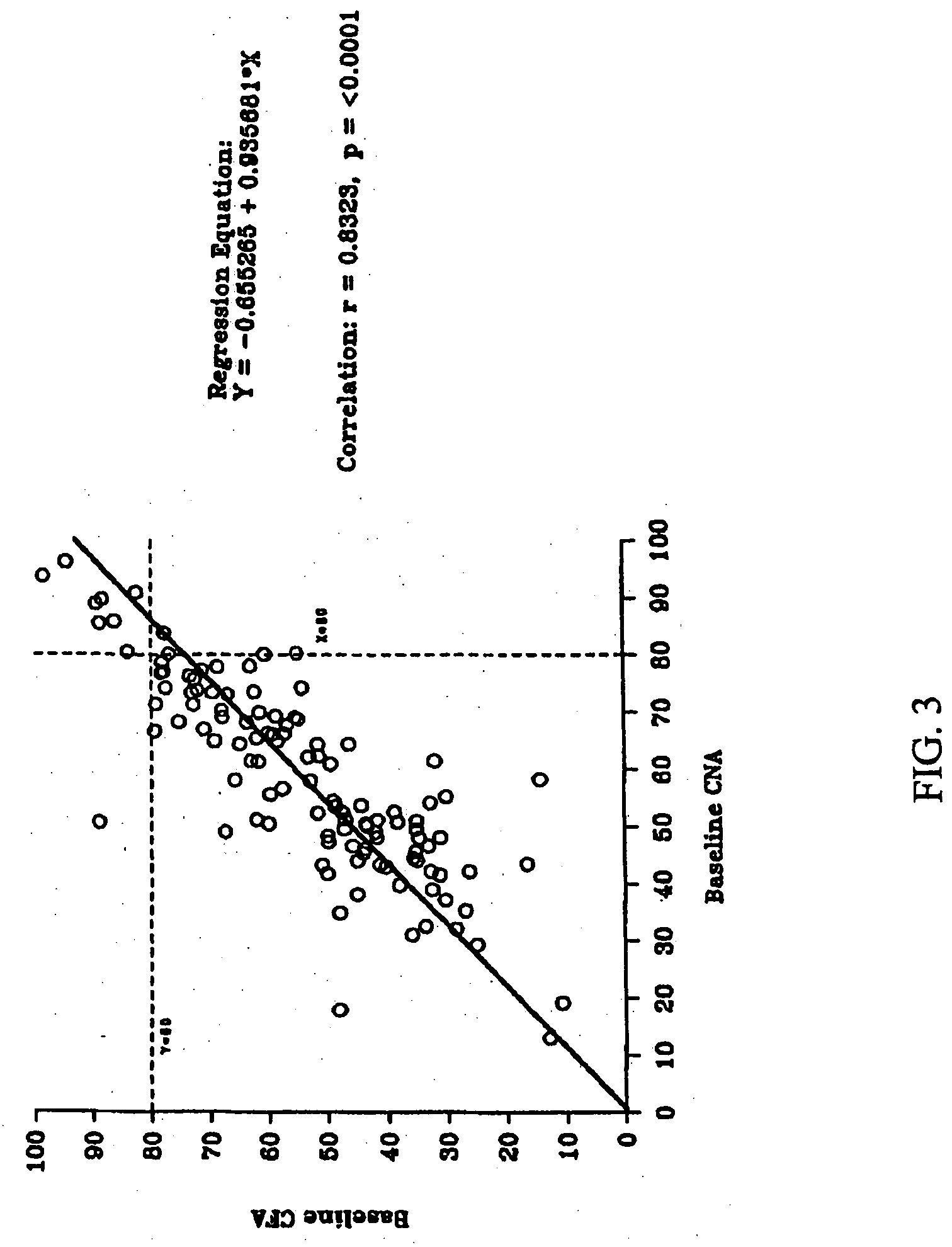Compositions and methods for treating pancreatic insufficiency
a technology for pancreatic insufficiency and compositions, applied in the field of compositions for the treatment of conditions, can solve the problems of affecting the normal functioning of the pancreas, unable to produce and/or secrete sufficient amounts of digestive enzymes to support normal digestive processes, and patients suffering from malabsorption of nutrients, etc., to achieve effective low-dose treatment regimens and stable enzyme components
- Summary
- Abstract
- Description
- Claims
- Application Information
AI Technical Summary
Benefits of technology
Problems solved by technology
Method used
Image
Examples
example 1
Preparation of the Study Compositions
[0100] The compositions used in the Phase 1 and Phase 2 studies discussed herein comprised lipase, protease, and amylase, each of which was manufactured separately under controlled conditions from different microbial strains prior to isolation, purification and drying. The manufacturing was carried out in such a way to provide compositions that would be stable and maintain potent enzyme activity within the small intestine.
[0101] Lipase: Methods for producing and purifying lipase from bacteria are well known to those skilled in the art. For example, the lipase component of the compositions was produced via fermentation from the bacterium Burkholderia cepacia (formerly known as Pseudomonas cepacia). Fermentation took place in a 25,000 liter fermenter. The strain was brought from a lyophilized frozen master cell bank, grown on a slant, brought up in eight liters of seed culture, further fermented in 2,500 liter seed fermenter, and finally produced...
example 2
The Phase 2 Study
Treatment Doses
[0108] The compositions used in the Phase 2 study comprised active ingredients of crosslinked Burkholderia cepacia lipase crystals, Aspergillus melleus protease crystals and soluble Aspergillus oryzae amylase; and the following inactive ingredients: microcrystalline cellulose, Maltrin, Crospovidone, colloidal silicon dioxide, magnesium stearate and talc. They contained lipase, protease and amylase in a ratio of 1:1:0.15 USP units of enzyme activity.
[0109] The compositions were delivered in the form of capsules of two different strengths. The higher strength formulation, referred to as “TCT20”, was filled into Size 2 white opaque, hard gelatin capsules at a strength of 20,000 USP Units of lipase, 20,000 USP Units of protease, and 3,000 USP Units of amylase. The lower strength formulation, referred to as “TCT5”, was filled into Size 5 white opaque, hard gelatin capsules at a strength of 5,000 USP Units of lipase, 5,000 Units of protease, and 750 USP...
example 3
The Phase 1 Study
[0159] Prior to the Phase 2 study, compositions according to this invention were also assessed for their safety and preliminary efficacy in a Phase 1 trial in cystic fibrosis patients suffering from pancreatic insufficiency.
[0160] An open label, dose-ranging study was carried out to determine the acute safety, tolerability and clinical activity of TheraCLEC™ in 23 cystic fibrosis patients afflicted with pancreatic insufficiency. Subjects took either 100, 500, 1,000, 2,500 or 5,000 lipase units / kg / meal of TCT for three days. Clinical and laboratory safety parameters and adverse events were monitored.
[0161] There were no serious adverse events or deaths in the Phase 1 study. Most adverse events were mild, although gastrointestinal complaints were common. TheraCLEC™ increased the coefficient of fat absorption and the coefficient of nitrogen absorption in all groups except those receiving 100 lipase units / kg / meal. For all subjects at the other dosing levels, the mean...
PUM
| Property | Measurement | Unit |
|---|---|---|
| Fraction | aaaaa | aaaaa |
| Fraction | aaaaa | aaaaa |
| Fraction | aaaaa | aaaaa |
Abstract
Description
Claims
Application Information
 Login to View More
Login to View More - R&D
- Intellectual Property
- Life Sciences
- Materials
- Tech Scout
- Unparalleled Data Quality
- Higher Quality Content
- 60% Fewer Hallucinations
Browse by: Latest US Patents, China's latest patents, Technical Efficacy Thesaurus, Application Domain, Technology Topic, Popular Technical Reports.
© 2025 PatSnap. All rights reserved.Legal|Privacy policy|Modern Slavery Act Transparency Statement|Sitemap|About US| Contact US: help@patsnap.com



